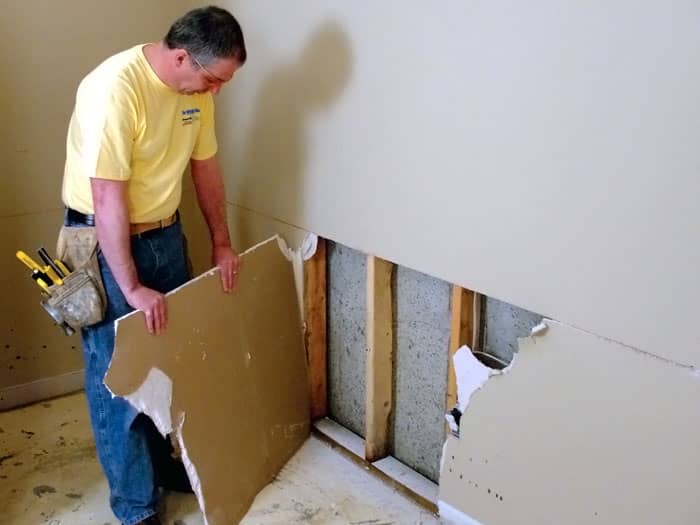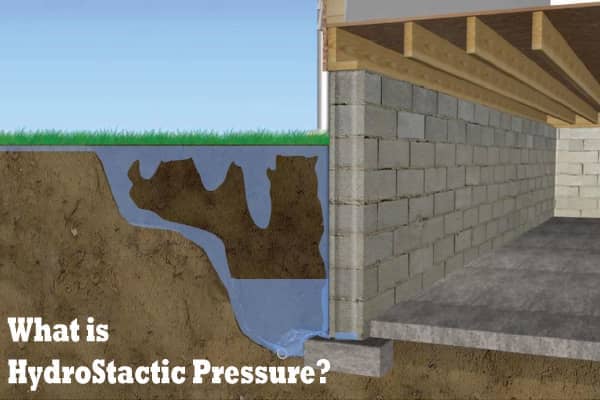Best Basement Waterproofing for Dummies
Best Basement Waterproofing for Dummies
Blog Article
10 Simple Techniques For Best Basement Waterproofing
Table of ContentsThe Greatest Guide To Best Basement WaterproofingNot known Facts About Best Basement WaterproofingRumored Buzz on Best Basement WaterproofingFacts About Best Basement Waterproofing RevealedThe Greatest Guide To Best Basement Waterproofing
AdvantaClean's experienced experts and professionals will certainly situate the water resource. If wall surface or piece cracks are existing, we will certainly inject polyurethane and epoxies right into the fractures and seal the compromise, preventing additional wetness from entering.
If there's condensation on the outside of the aluminum foil, you have high moisture in your cellar. If the aluminum foil has condensation on the inside surface area (next to the wall), the dirt around your residence may be naturally damp from a high water table or poor soil drain.
You can waterproof simply your interior wall surfaces, which may solve the issue. Or you can waterproof your outside walls, which is a far better wager but even more pricey. Right here's the inside story on the different types: These thick layers are cement-like. Once they dry, they adhere completely to concrete and masonry walls (Best Basement Waterproofing).
The Facts About Best Basement Waterproofing Uncovered
Swirl the brush at the last of application to provide the wall surface an eye-catching, completed look. Concrete water resistant layers can't be put on formerly repainted surfaces; inspect the tag. A 5-gallon container expenses concerning $60. Recognized as densifiers, they are suitable just for wall surfaces that have not been repainted or sealed.
You comb, roll, or spray it on much more thickly one gallon covers just 75 square feet, not the 300 square feet regular with common paint. Water resistant paint is fine for DIY application. You can apply it over repainted surfaces, and paint over it once it's treated (one gallon costs $37).
It can set you back $10,000 to $15,000, depending on the work needed. Outside waterproofing involves excavating all around the home to the full deepness of the foundation walls, after that setting up a waterproof layer or membrane layer topped by drainage panels.
A basement without waterproofing is kind of like that. Your basement doesn't want to go with a rainstorm without correct protection simply as much as you do not want to.
See This Report about Best Basement Waterproofing
If you've done your research study, you 'd recognize there are two kinds of waterproofing: inside and outside. It can obtain confusing what they both mean, which one's a much better financial investment, and what will in fact keep the water out. Don't stress, we assembled this blog site to conveniently define both techniques for you and go over the advantages and disadvantages of each.
Exterior waterproofing is a waterproofing approach that entails securing your home from the outside. The structure wall surfaces are after that cleaned up, sealed, and covered with a waterproof membrane layer or sealant.

The Basic Principles Of Best Basement Waterproofing
It's an extra involved procedure that calls for digging up your lawn, which is expensive and taxing. Exterior waterproofing entails getting rid of everything bordering your home, including porches, driveways, pathways, landscape design, a/c systems, decks, and more. If any one of the job was done inaccurately and water is websites still entering your cellar, there isn't much you can do to deal with or repair it.
Interior basement waterproofing includes waterproofing from the within. Any kind of water that leakages into your cellar is redirected before it touches your floor. It's kind of like using a raincoat under your clothing. It entails 2 things: a water drainage track and a sump pump. It functions by securing the within of your cellar walls and floors so water that tries to go into is carried out through a sump pump.
It's a reliable method to waterproof your cellar - Best Basement Waterproofing. you could look here The drawback of interior basement waterproofing primarily has to do with the setup process. This method needs kept things, furnishings, and built-in shelving or cabinets to be relocated from touching the basement walls. And during setup, your basement can not be used. The most significant distinction between the two techniques is this: Exterior waterproofing is a preventative remedy and interior waterproofing is a restorative service.
The smart Trick of Best Basement Waterproofing That Nobody is Talking About
To conclude, outside and indoor basement waterproofing are both reliable approaches of securing your home from water damages. Exterior waterproofing produces a barrier that stops water from entering your home, while indoor waterproofing redirects water that does enter your home. And it is very important to note that outside waterproofing is a pricey and disruptive installment procedure when contrasted to indoor waterproofing.
Whichever technique you pick, make sure you pick a trusted and reliable professional for the work. If you have any concerns about basement waterproofing, please reach out to us.
You can load out our form here, start a chat in the bottom right-hand edge, or call us at 1-800-827-0702.
Report this page